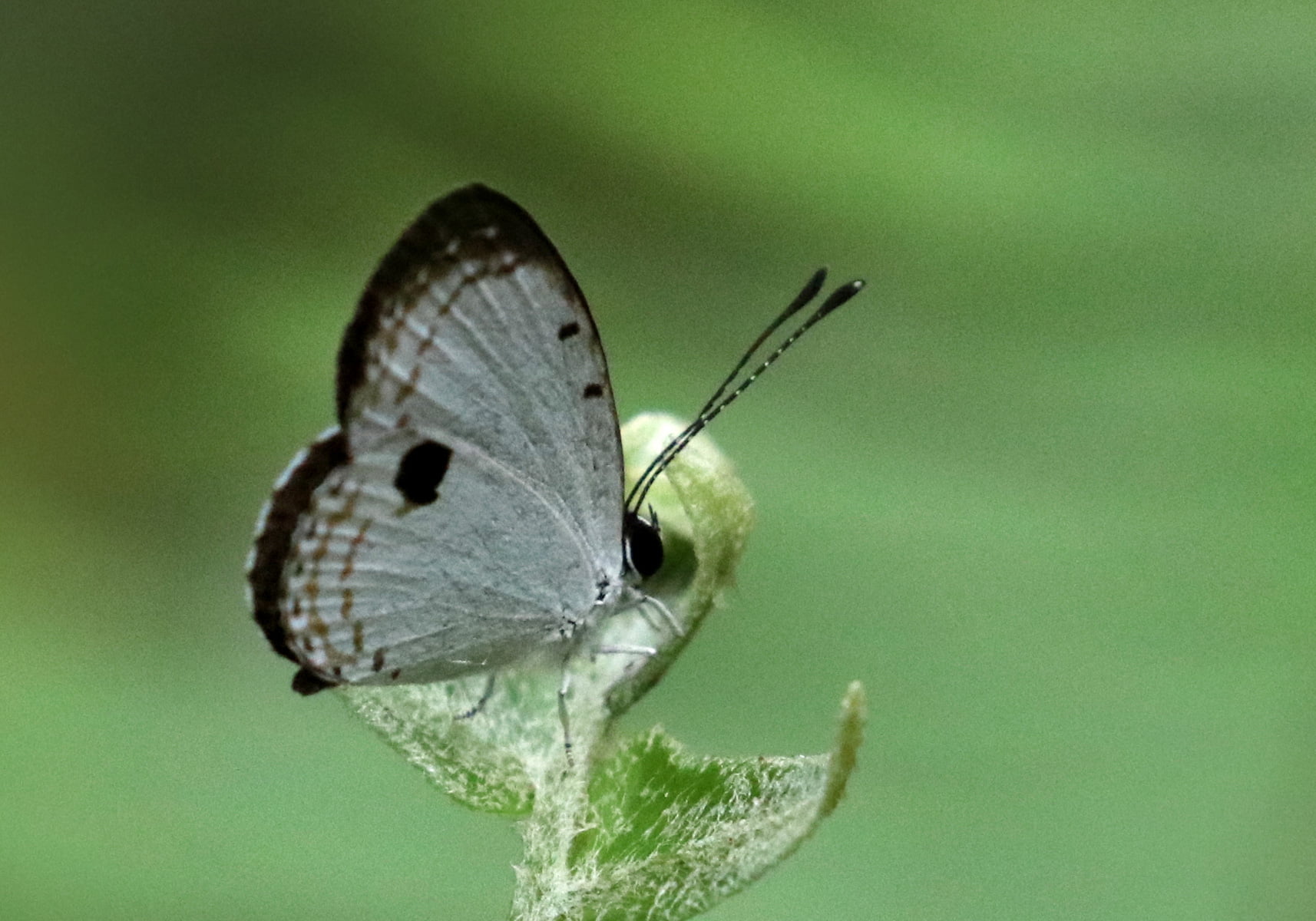Neopithecops zalmora has dark brown upperwings, in females there are white disc patches on the forewings. The undersides of the wings are whitish with a series of dark brown and black spots and a discontinuous series of post-discal striae. On the hindwing there is a prominent black dot in space 7 near the costa and a black dot of a smaller size in space 1a.
Larva: The larvae of Neopithecops zalmora have a pale yellowish green body, the head capsule is yellowish green, the body is covered with lateral setae. In the 4th instar the prothoracic protector becomes bigger and visible than the previous instar, the color is lighter and there is already a nectar organ on the back which is part of the mutualism symbiosis with ants.
Pupa: Neopithecops zalmora pupae in the form of a distinctive lycaenid, yellowish green in color with black or dark brown patches adorning the body. The pupa is about 7 mm long.


